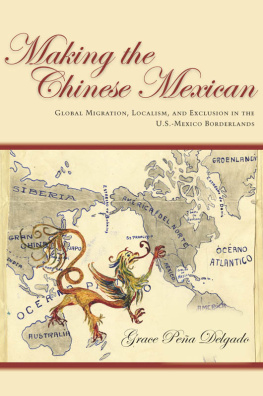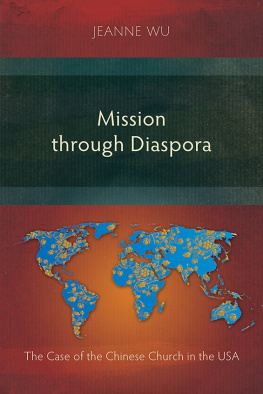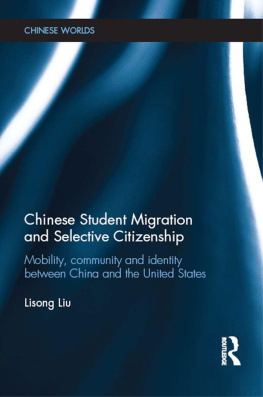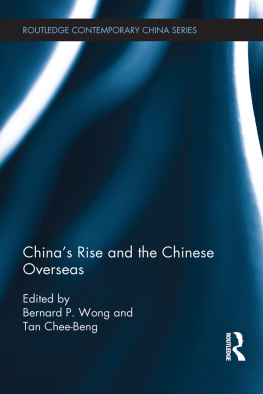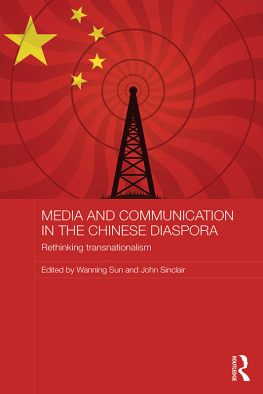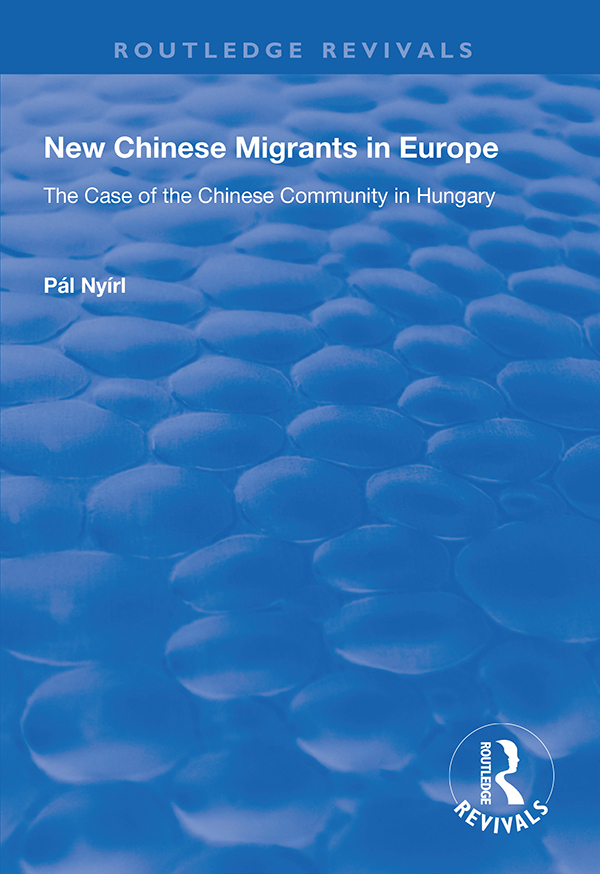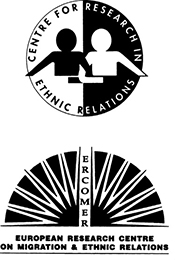NEW CHINESE MIGRANTS IN EUROPE
Dedicated to the memory of Vladimir Gribov
Dansk Center for Migration og Etniske Studier
New Chinese Migrants in Europe
The case of the Chinese community in Hungary
PL NYRI
University of Oxford
First published 1999 by Ashgate Publishing
Reissued 2018 by Routledge
2 Park Square, Milton Park, Abingdon, Oxon OX14 4RN
711 Third Avenue, New York, NY 10017, USA
Routledge is an imprint of the Taylor & Francis Group, an informa business
Copyright Pl Nyri 1999
All rights reserved. No part of this book may be reprinted or reproduced or utilised in any form or by any electronic, mechanical, or other means, now known or hereafter invented, including photocopying and recording, or in any information storage or retrieval system, without permission in writing from the publishers.
Notice:
Product or corporate names may be trademarks or registered trademarks, and are used only for identification and explanation without intent to infringe.
Publishers Note
The publisher has gone to great lengths to ensure the quality of this reprint but points out that some imperfections in the original copies may be apparent.
Disclaimer
The publisher has made every effort to trace copyright holders and welcomes correspondence from those they have been unable to contact.
A Library of Congress record exists under LC control number: 99073344
ISBN 13: 978-1-138-32310-0 (hbk)
ISBN 13: 978-0-429-45158-4 (ebk)
The original Hungarian version of this book owes some of its material to the helpfulness of Dr. Julia Nyiri, Dr. Katalin Haraszti, Jeremy Liou, Istvn Heimlich (Menedk Hungarian Association for Migrants), Li Minghuan, Mlanie Lam Cham Kee, Heather Zhang, Zhao Luoyan, Manivanh Peng, Dr. Judit Tth, Zhao Yanfen, Dr. Olga Tchoudinovskikh, Dr. Eugeny Soroko, Shen Zhenying, and the association of Chinese merchants of the Komondor Kits shopping centre (Huashanghui). To Procter & Gamble Eurocor N. V. I am indebted for the word processing equipment.
The English version appeared thanks to encouragement from Professors John Salt (University College London) and David Coleman (Oxford), and its language benefited from the comments Professor Carolyn D. Muir (Hong Kong University) made on a draft. I drew a significant part of the English-language material from my dissertation prepared under the guidance of Professor Arlen V. Meliksetov. It, in turn, had been enriched by the discussion preceding and accompanying its defense at the Institute for Asian and African Studies of Moscow State University. The contributions of my official opponents Dr. Mikhail V. Karpov, Dr. Olga S. Tchoudinovskikh, Professors Yuri M. Galenovitch and Valentina M. Moiseenko, and Dr. Alexander G. Larin should be acknowledged in particular. Finally, it is appropriate to point out here the importance of the enterprise undertaken by Pter Polonyi in publishing a monthly journal, first called Kelet and then Tvol-Kelet, which provided intelligent analyses of the situation of the Chinese in Hungary between 1995 and 1998. The journal was written and edited by him almost single-handedly and sought to fill a gaping hiatus of knowledge about contemporary East and Southeast Asia for the interested lay and semi-professional Hungarian public. Its expert reporting on Chinese migrants along with developments in Asia itself made its perspective internationally unique. In addition, Peter repeatedly provided me with exhaustive updates of the developments in the community when I returned home from abroad. This book owes much to these conversations as well as to the journal.
Finally, I would like to thank Dr. Judit Juhsz and Len Kern for providing fresh data during the editing of the book, Dr. Frank Pieke for bringing to my attention a whole body of new literature on migration, and a reviewer for Curzon Press for an insightful review of the manuscript. I particularly appreciate the database of over ten thousand entries processed and provided to me free of charge by Col. Dr. Ferenc Blint and Mrs. Gyrgy Vrai of the Hungarian Ministry of the Interior.
Of course, my primary debt is to my informants, the protagonists of this book, the Chinese in Budapest. I wish them a peaceful, prosperous, and culturally gratifying life as active participants in a democratic Hungarian polity.
It took more than ten years before I could understand them. I went to tea shops and gambling dens to be able to meet everyone and investigate them
[] He was willing to talk because, first, I treated him as a human; second, I invited him to dinner; third, he could win some money from me.
- Mao Zedong on peasants in Hunan
Miscellany of Mao Zedong Thought (1949-68), Part II, p. 389
Joint Publications Research Service, Translations from Communist China
61269
Much attention is of late being paid to the changing patterns of international migration. Made possible by the enormous expansion of transportation and communication links, new patterns are emerging which are more reversible, more flexible, and often involve shorter time periods spent in the destination country, followed by return or remigration. These patterns are as different from the westbound immigration of yesteryear insofar as the latter term uses the optics of a specific destination country as Europes host societies are from what they were in the seventies. The driving force behind postmodern migration is no longer abject poverty, political, ethnic, or religious persecution, or inherited patterns of a village: it is the aspiration for a life of a better quality, less control by the society over the individual, and more and better money-earning opportunities. It is a shift of base that does not cut the migrants links to his place of origin: the social capital he has accumulated in his earlier life remains and can be used almost independently of his moves in space. In one of the most interesting attempts to conceptualise new migration patterns, John Salt (1997) suggested that international migration itself be regarded as a growing and diverse international business, providing hundreds of thousands of jobs world-wide, and managed by a set of individuals and institutions each of which has an interest in how the business develops and is a potential player in emergent transnational communities. A debate is already taking place among demographers whether quantitative definitions of migration should be loosened to include, for example, shuttle traders in Asia and Eastern Europe. Classical migration patterns that served as the basis for the definitions used by international monitoring agencies such as the United Nations are typically characterised by moves from a niche in one social, economic, and political environment to a niche in another, which the migrant experiences as ruptures that involve a reconstruction of his identity.
The debate around the need to reconceptualise migration is reflected in Zlotniks (1992), Skeldons (1990, 1992, 1997), and Massey and coauthors(1993) work.



